Timothy Stott reviews the programme at the 2023 Venice Architecture Biennale, dubbed architecture's 'biggest festival of ideas' - read our review of the Irish pavilion at Venice here.
On 20th May, the 18th International Architecture Exhibition, organised by La Biennale di Venezia, opened in Venice. Its Artistic Director, the Ghanaian/Scottish architect and writer Lesley Lokko, chose the title of Laboratory of the Future, continuing her interest in how architecture, now, can promote change.
To do this, she expands architecture beyond buildings and structures to include many other arts and to treat ideas as important as artefacts. For example, one of the Biennale's sections is called Dangerous Liaisons, to showcase where architecture meets other disciplines, fields, and methods.

For the first time, too, Lokko has turned the attention of the Biennale to Africa and the African Diaspora to listen to the stories these diverse communities tell and the futures they imagine.
These stories begin in the Central Pavilion, housed in the Giardini. Some characters are well known, such as the award-winning architect Sir David Adjaye or Chicago artist and entrepreneur Theaster Gates (who looks back on ten years of his Black Artist Retreat). Others are less familiar.
Through film and a series of graphite panels, Dr Thandi Loewenson’s Uhuru Catalogues combines the struggles of African liberation movements with the history of the Uhuru x-ray satellite, launched from the recently independent Kenya by the United States and Italy in 1970. Uhuru Catalogues tells of colonialism, extraction, betrayal, and independence struggles through the story of an obscure satellite programme.
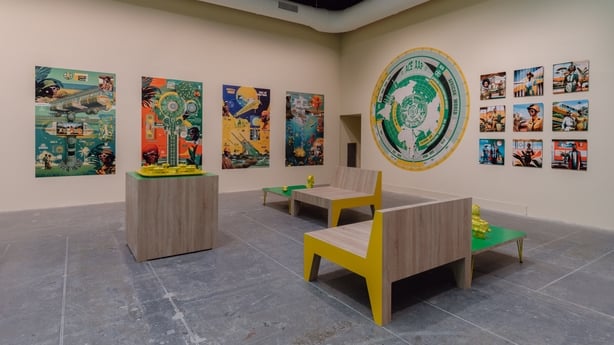
Olalekan Jeyifous presents part of his All-Africa Protoport (AAP) as a future network for renewable energy production (tidal, solar, algal) to support sustainable, continent-wide travel, part of the wider African Conservation Effort. Here, Jeyifous presents an imaginary lounge for the Barotse Floodplain AAP in western Zambia.
Across these exhibits, traditional or vernacular ways of building and living combine with memories (and sometimes current experiences) of colonisation and the social and political possibilities of new technologies, in ways that sometimes revive the spirit of Afro-Futurism (which brought together sci-fi, high technology, and Black culture in the 1990s).
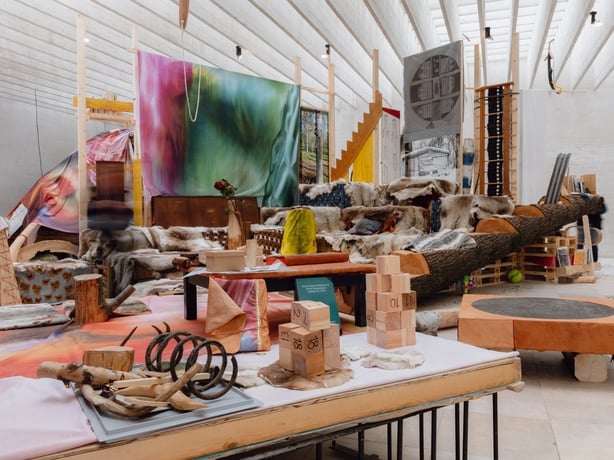
National pavilions are not obliged to contribute to the theme of the Biennale, but arguably the most successful here do, often proposing that any future tested in this 'laboratory’ must follow from Indigenous ways of building and living.
Notable among these pavilions are the Nordic Countries (Sweden, Finland, Norway), showing Girjegumpi: The Sámi Architecture Library collected by artist and architect Joar Nango. The library has evolved and travelled over the past fifteen years. In the Nordic Countries pavilion, it includes makeshift shelters, seats, and shelving, an amphitheatre, and a series of talks and demonstrations on Sámi building culture.
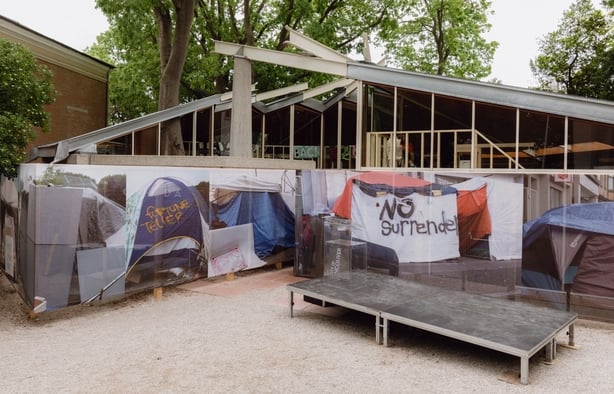
Elsewhere, Canada’s pavilion tackles the country’s protracted housing crisis produced by a deregulated economy of real estate speculation. It feels all too familiar. The pavilion, Not for Sale!!, led by Architects Against Housing Alienation, makes ten demands to correct this situation and return citizens to the land they inhabit and the social and natural worlds that support them. The pavilion mimics a protest camp, with banners, lean-tos, communal spaces, and so on, in the spirit of protests from the American Indian Movement of the 1970s, the Oka Crisis of 1990, to the #NoDAPL campaign at Standing Rock in 2016.
Slovenia’s +/- 1°C: In Search of Well-Tempered Architecture riffs on Reyner Banham’s famous The Architecture of the Well-Tempered Environment from 1969 to criticise how eco-friendly architecture now focusses too much on energy efficiency. Their survey of vernacular architecture across Europe shows instead the many imaginative ways in which heating and cooling can be integrated into ways of inhabiting space and thinking about architecture ecologically.
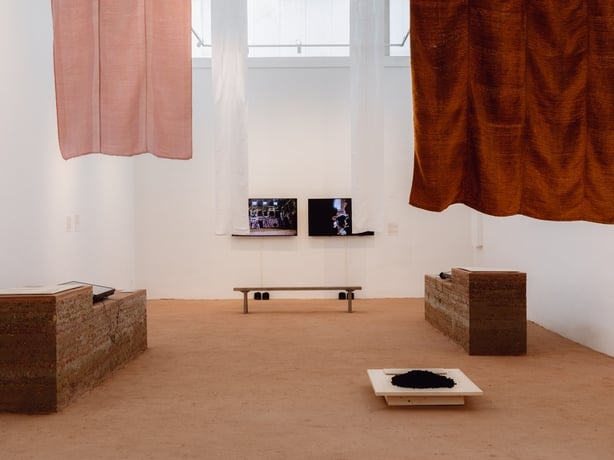
Brazil’s pavilion, Terra, returns us to the soil, both as ground or territory and as the shared Earth and begins from Indigenous rights activist Ailton Krenak’s declaration that ‘the future is ancestral’. Its first gallery criticises Brasilia, Oscar Niemeyer’s vast modernist capital in the country’s central highlands, completed in 1960. The city’s cross-axial plan, often compared to a bird or dragonfly, becomes instead a crucifix and emblem of internal colonisation. Brasilia’s gleaming buildings did not land upon a terra nullis but erased Indigenous and African Brazilian (or quilombola) architectures recently recognised by Brazil’s National Institute of Historic and Artistic Heritage. The second gallery shows how these latter architectures combine knowledge of land and memory.
Watch: In Conversation with Lesley Lokko at the 2023 Venice Architecture Biennale
Several other exhibitions return to the soil as an ecosystem, a resource, an archive, and, quite often, a battleground.
In the Arsenale, London-based group Forensic Architecture present The Nebelivka Hypothesis, which uses recent archaeological research on 6000-year-old settlements in what is now Ukraine. These cities had a plan of concentric circles with empty centres, suggesting that, in comparison to the more familiar Mesopotamian cities, these were without hierarchy.
Further, they lived lightly on the land and might even had contributed to the fertile ‘black soils’ for which this area is now famous. Forensic Architecture present their research with a sophisticated mixture of data graphics and narration on a large screen and projected onto a dirt floor.
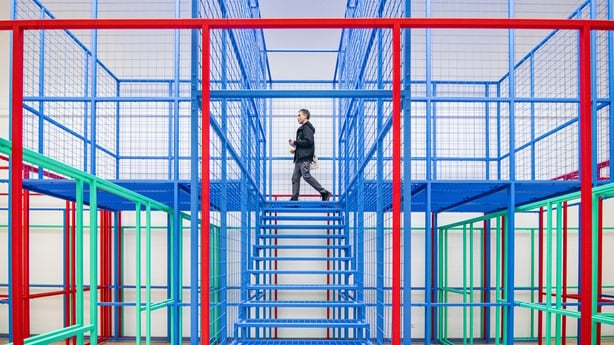
(Pic: Simone Padovani/Getty Images)
Lokko notes that the story of architecture up to now is not wrong but incomplete. The 18th International Architecture Exhibition expands that story and, crucially, proposes that decolonisation and decarbonisation require each other. In 2021, the construction sector ‘accounted for around 37% of energy- and process-related CO2 emissions and over 34% of energy demand globally’. (1) According to one estimate, the weight of concrete on Earth will exceed all biomass by 2040. (2) In future, we need to live and build lightly on the Earth. At its best, this laboratory shows that we might already know how to do so.
The 18th International Architecture Exhibition runs until November 18th, 2023 - find out more here. Dr Timothy Stott is Head of Department, History of Art and Architecture and Associate Professor in Modern and Contemporary Art History at Trinity College, Dublin.
(1) UN Environment Programme, 2022 Global Status Report for Buildings and Construction. (2) Elhacham, E., Ben-Uri, L., Grozovski, J. et al. Global human-made mass exceeds all living biomass. Nature 588, 442–444 (2020)
